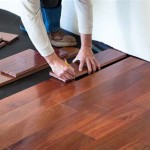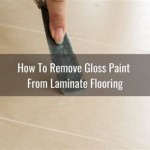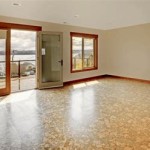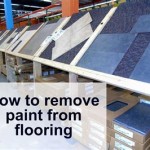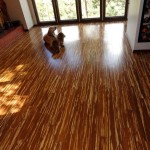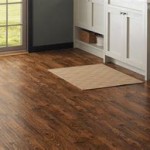Vinyl vs. Laminate Flooring: A Comprehensive Comparison
Choosing the right flooring material is a crucial aspect of any home renovation or construction project. Two popular options, vinyl and laminate flooring, frequently contend for consideration. Both offer a combination of aesthetic appeal, durability, and affordability, but they differ significantly in their composition, performance characteristics, and installation methods. This article will explore the distinctions between vinyl and laminate flooring, providing a detailed comparison to assist in making an informed decision.
Composition and Construction
The fundamental difference between vinyl and laminate flooring lies in their construction. Vinyl flooring is primarily composed of synthetic materials, typically polyvinyl chloride (PVC). It is manufactured in multiple layers, including a backing layer, a core layer (which can be solid vinyl or a composite), a printed design layer, and a protective wear layer. The wear layer is crucial in determining the floor's resistance to scratches, scuffs, and stains. Vinyl flooring is typically available in sheets, planks, and tiles, offering versatility in design and installation.
Laminate flooring, on the other hand, is a composite material consisting of several layers bonded together under high pressure. The core layer is typically made of high-density fiberboard (HDF) or medium-density fiberboard (MDF), providing structural stability. Above the core layer is a decorative photographic layer that simulates the appearance of wood, stone, or other materials. Finally, a transparent wear layer protects the decorative layer from damage. Laminate flooring primarily comes in plank form, designed to mimic hardwood flooring.
Durability and Performance
The durability of both vinyl and laminate flooring depends heavily on the quality of materials and the thickness of the wear layer. Vinyl flooring, particularly luxury vinyl tile (LVT) and luxury vinyl plank (LVP), generally exhibits excellent water resistance. Some vinyl products are completely waterproof, making them suitable for moisture-prone areas like bathrooms, kitchens, and basements. Additionally, vinyl flooring is relatively soft underfoot, providing some level of comfort and sound insulation.
Laminate flooring offers good durability, particularly against scratches and dents, due to its hard wear layer. However, its moisture resistance is generally lower than vinyl flooring. While some laminate products are water-resistant or waterproof, they are typically more expensive and require careful installation to prevent water from seeping into the seams and damaging the core. Water damage can cause laminate flooring to swell, warp, and delaminate.
The wear layer thickness significantly impacts the lifespan and resistance to wear and tear for both types of flooring. Thicker wear layers provide better protection against scratches, stains, and fading. When selecting vinyl or laminate flooring, it is essential to consider the intended use and the level of foot traffic in the area to determine the appropriate wear layer thickness.
Aesthetics and Design Options
Both vinyl and laminate flooring offer a wide range of aesthetic options. Modern printing technology allows for highly realistic replication of natural materials like hardwood, stone, and tile. Both come in a variety of colors, patterns, and textures.
Vinyl flooring is capable of achieving a more realistic texture and embossed patterns that closely mimic the look and feel of natural materials. Luxury vinyl products, in particular, often feature detailed grain patterns and beveled edges, enhancing their authenticity. Because the design layer is directly printed onto the vinyl, manufacturers have greater flexibility in creating unique and custom designs.
Laminate flooring relies on a photographic layer for its visual appeal. While the quality of the photographic layer has improved significantly over the years, it may not always achieve the same level of realism as high-end vinyl products. However, laminate flooring often offers a wider range of wood-look options, including different wood species, plank sizes, and surface textures.
Installation
Both vinyl and laminate flooring are generally considered DIY-friendly, although the specific installation method varies depending on the product type. Vinyl flooring can be installed using several methods, including glue-down, click-lock (floating), and peel-and-stick. Glue-down installation provides a secure and permanent bond to the subfloor, while click-lock and peel-and-stick options offer a faster and easier installation process.
Laminate flooring typically employs a click-lock installation method, where planks interlock with each other to create a floating floor. This method does not require adhesive or nails and allows for easy installation over existing floors. However, proper preparation of the subfloor is crucial for ensuring a level and stable surface. An underlayment is typically required to provide cushioning, sound insulation, and moisture protection.
It is important to note the subfloor requirement for both. Vinyl can be more forgiving on imperfect subfloors while laminate generally requires very flat surfaces to prevent issues like popping or separation over time.
Cost Considerations
Both vinyl and laminate flooring are generally more affordable than natural materials like hardwood and stone. The cost of both materials can vary depending on the quality, thickness, and brand. Vinyl flooring tend to be more affordable than laminate particularly when considering installation, as it generally requires less preparation.
Laminate flooring cost is greatly affected by the quality of the core material, the wear layer thickness, and any added features like water resistance. Higher-quality laminate flooring can be comparable in price to mid-range vinyl flooring. Installation costs can also vary depending on whether professional installation is required. Both require a similar level of skill to install correctly and safely.
The lifespan of the flooring is also a significant factor in the overall cost. While both are durable, differences in maintenance and replacement costs eventually factor into the overall cost.
Maintenance and Cleaning
Maintaining both vinyl and laminate flooring is generally straightforward. Regular sweeping or vacuuming is recommended to remove dirt and debris. For more thorough cleaning, a damp mop and mild detergent can be used. It is crucial to avoid using abrasive cleaners or harsh chemicals, as these can damage the surface.
Vinyl flooring is highly resistant to stains and spills, making it easy to clean and maintain. However, some types of vinyl flooring may be susceptible to scratches from sharp objects. Using furniture pads and taking precautions to avoid dragging heavy objects across the floor can help prevent scratches.
Laminate flooring is also relatively easy to clean, but it is essential to avoid excessive moisture. Spills should be wiped up immediately to prevent water from seeping into the seams. Using a damp mop rather than a wet mop is crucial to prevent water damage. Regular cleaning with a laminate floor cleaner can help maintain its appearance and prevent buildup of dirt and grime.
Environmental Considerations
The environmental impact of both vinyl and laminate flooring is a growing concern for environmentally conscious consumers. Vinyl flooring is made from PVC, which is a petroleum-based material. The production of PVC can release harmful chemicals into the environment, and the disposal of vinyl flooring can contribute to landfill waste. However, some manufacturers are now offering recycled vinyl flooring options, which can help reduce the environmental impact.
Laminate flooring is primarily made from wood fibers, which are a renewable resource. However, the manufacturing process can involve the use of formaldehyde-based adhesives, which can release volatile organic compounds (VOCs) into the air. Look for laminate flooring products that are certified by organizations like FloorScore, which ensure low VOC emissions. Both flooring types have environmental impacts at different stages of their product life cycles.
Underlayment Considerations
Underlayment plays a vital role in the performance and longevity of both vinyl and laminate flooring, although its necessity and specific requirements may differ. Underlayment serves multiple purposes, including providing cushioning, sound insulation, moisture protection, and leveling minor subfloor imperfections. For laminate flooring, underlayment is almost always required, particularly for floating installations. It provides a barrier against moisture rising from the subfloor and helps to reduce noise transmission between floors. The type of underlayment should be selected based on the specific characteristics of the laminate flooring and the subfloor conditions.
For vinyl flooring, the need for underlayment depends on the type of vinyl flooring and the quality of the subfloor. Some vinyl products, such as LVT with a pre-attached underlayment, may not require additional underlayment. However, for thinner vinyl sheets or tiles, underlayment can improve comfort, sound insulation, and moisture resistance. Additionally, underlayment can help to smooth out minor imperfections in the subfloor, providing a more even surface for the vinyl flooring. When selecting an underlayment for vinyl flooring, it is important to choose a product that is compatible with vinyl and won't react chemically with the flooring material.
Suitability for Different Rooms
The choice between vinyl and laminate flooring often comes down to the specific requirements of the room where it will be installed. Vinyl flooring's superior water resistance makes it an excellent choice for bathrooms, kitchens, laundry rooms, and basements, where moisture is a concern. It can withstand spills, humidity, and occasional flooding without damage. Additionally, vinyl flooring's softer surface provides a comfortable and slip-resistant surface in these areas.
Laminate flooring is well-suited for living rooms, bedrooms, hallways, and dining rooms, where water exposure is less likely. Its durability and resistance to scratches and dents make it a good choice for high-traffic areas. However, precautions should be taken to prevent water damage, such as using rugs in areas prone to spills and promptly cleaning up any accidents. While some water-resistant laminate options are available, they may not offer the same level of protection as vinyl flooring in high-moisture environments. Therefore, careful consideration of the room's specific conditions is crucial when selecting between vinyl and laminate flooring.

Vinyl Flooring Vs Laminated Which Is The Better Choice Lamiwood Designer Floors

What S The Difference Between Vinyl And Laminate Flooring Igloo Surfaces

Difference Between Laminate And Vinyl Flooring Cpme

Vinyl Vs Laminate Flooring Which One Should You Use Easiklip Floors

Luxury Vinyl Plank Vs Laminate What S The Difference

Vinyl Plank Vs Laminate Flooring Which Is Right For You Onflooring

Laminate Vinyl Flooring In Portland Or

This Or That Laminate Vs Vinyl Ben Laube Homes

Vinyl Vs Laminate Flooring What S The Difference

Vinyl Vs Laminate Linoleum Which Is The Best Flooring Wood And Beyond Blog
See Also
